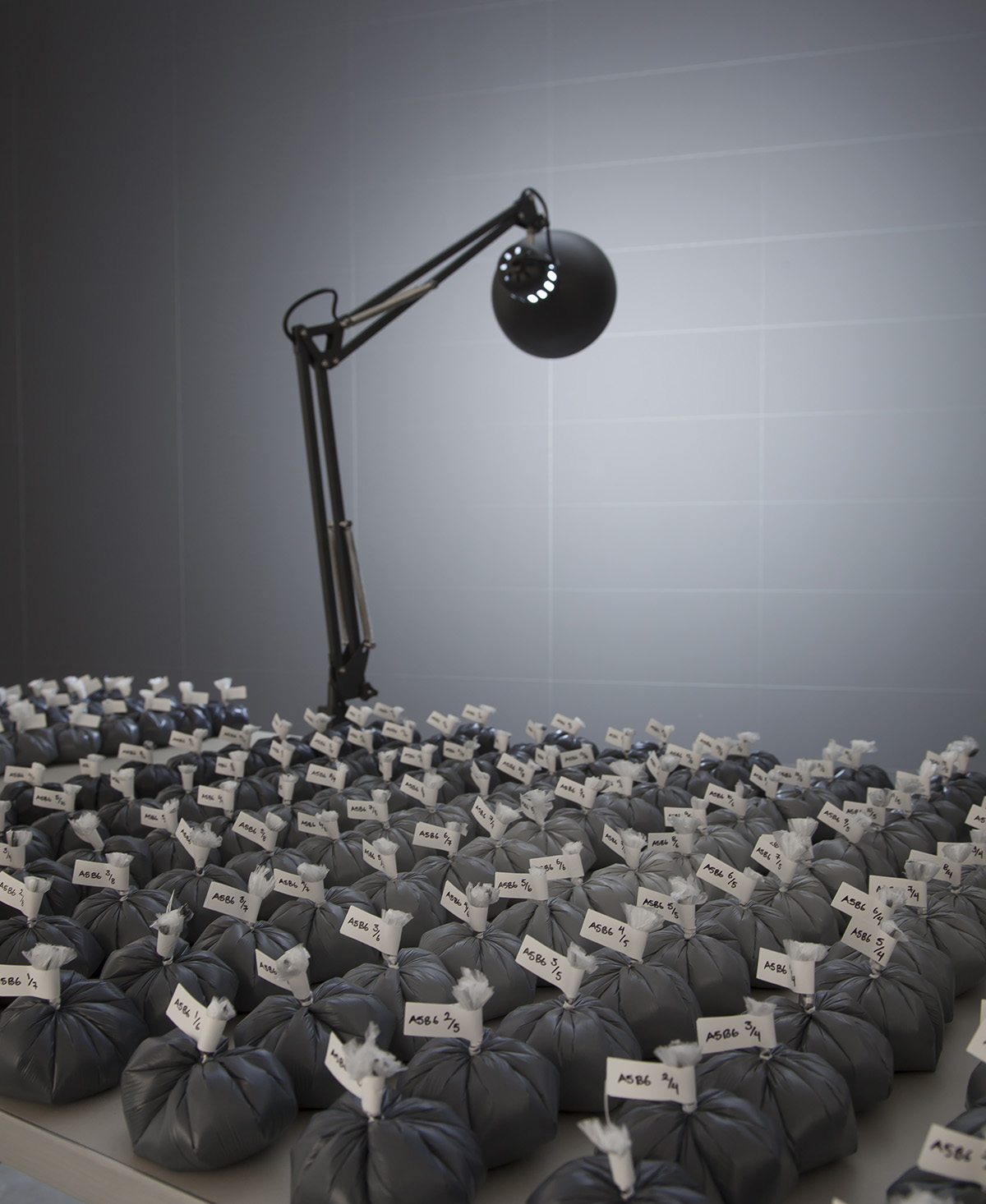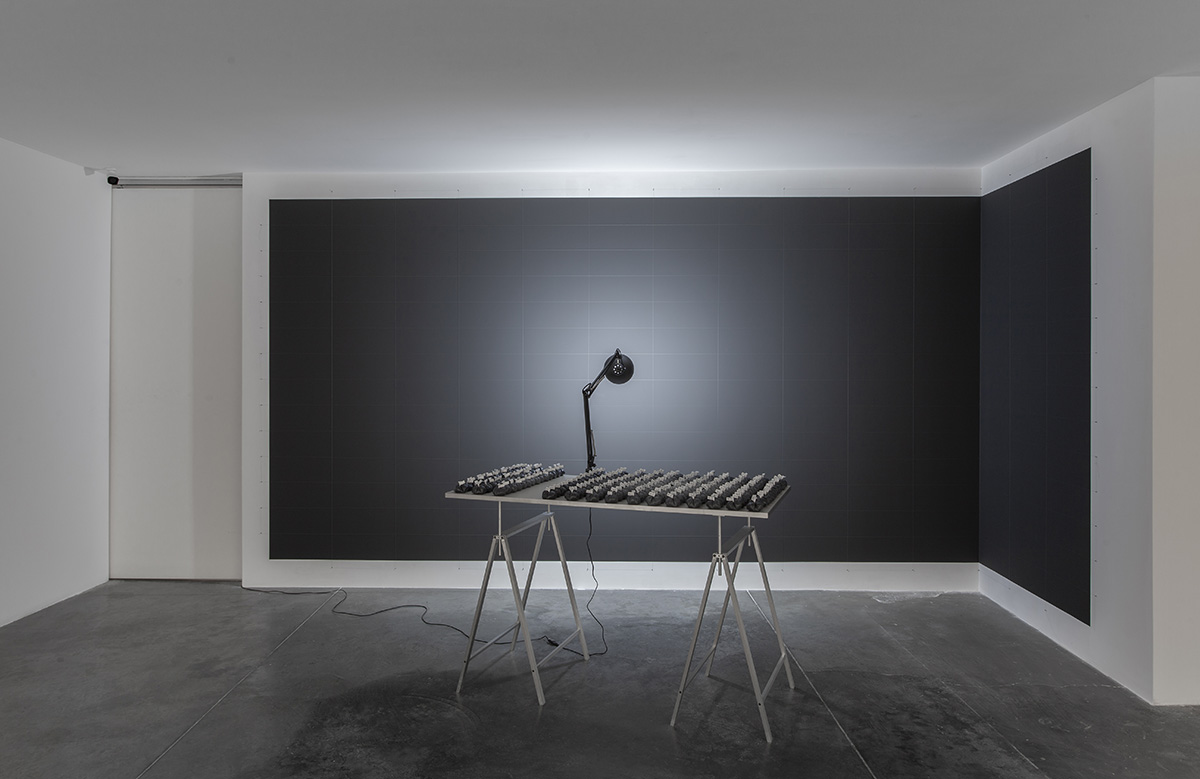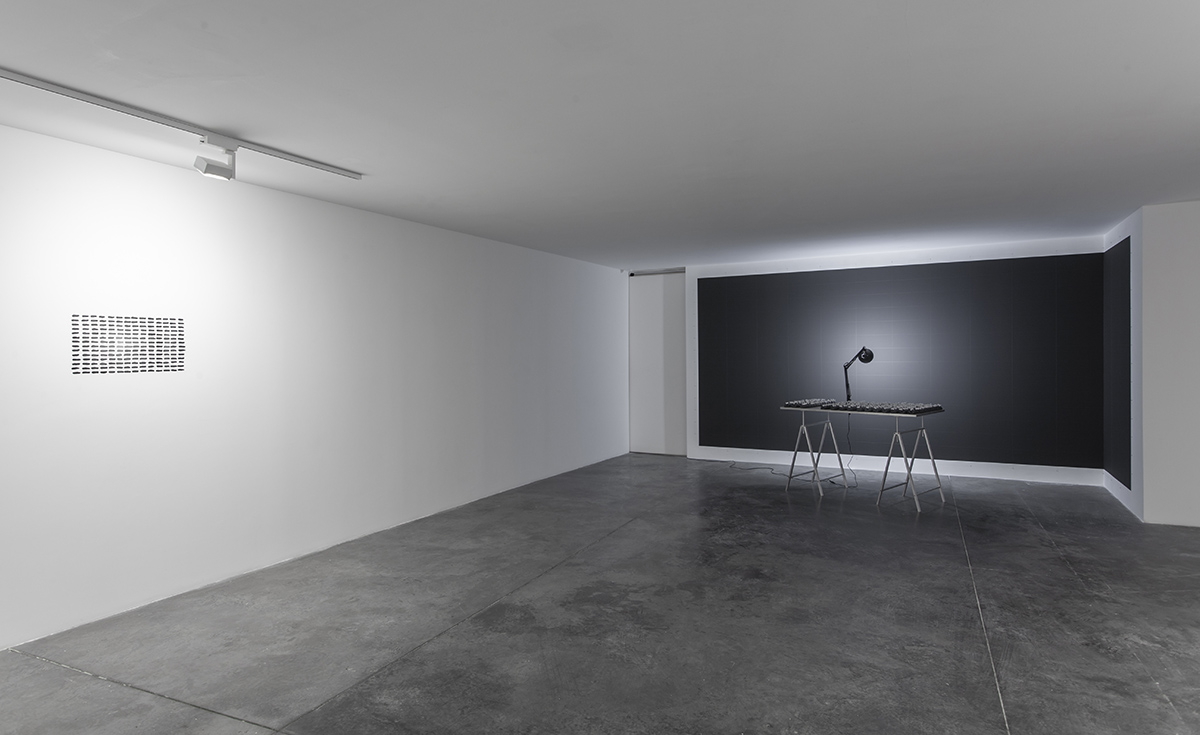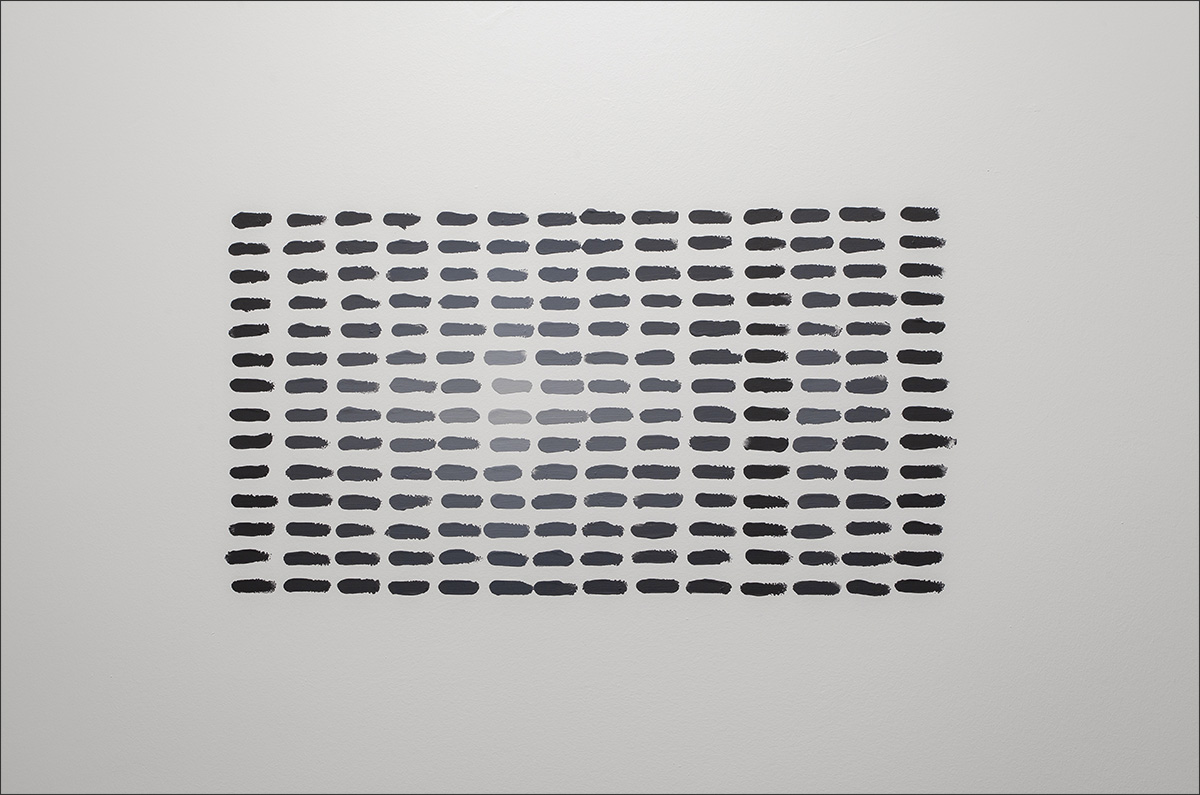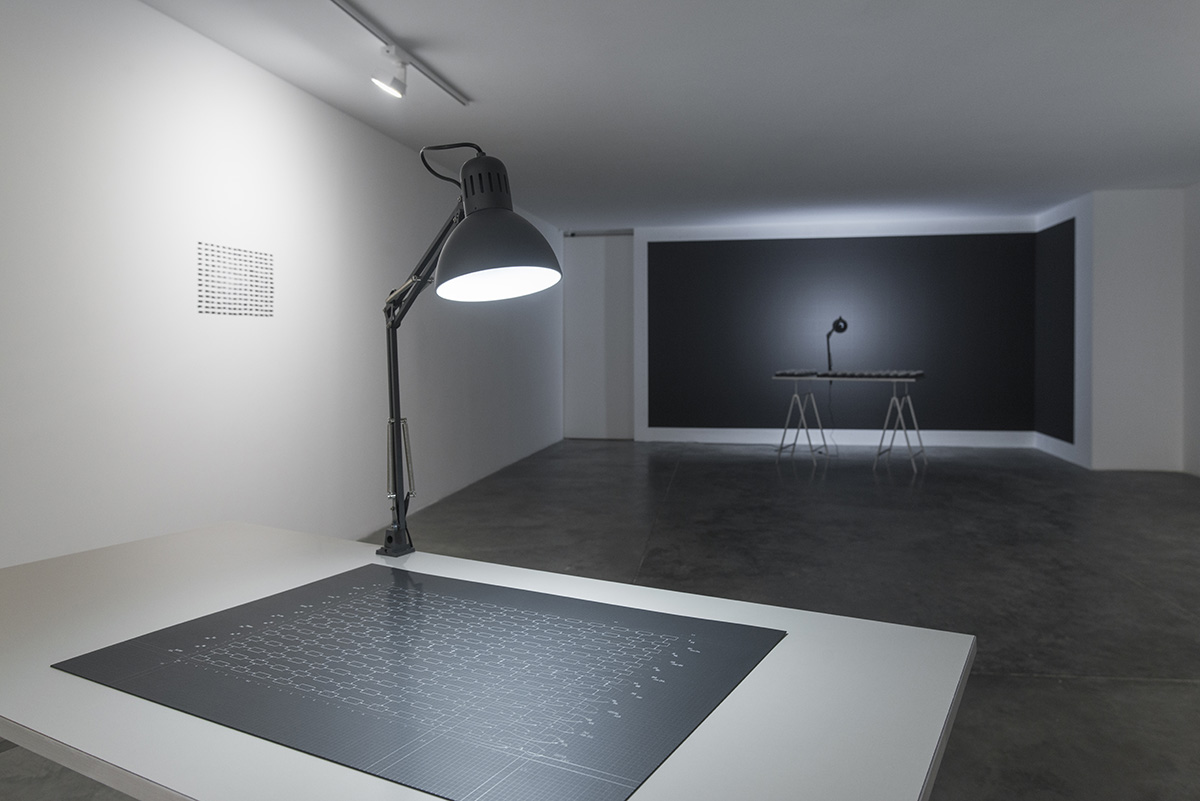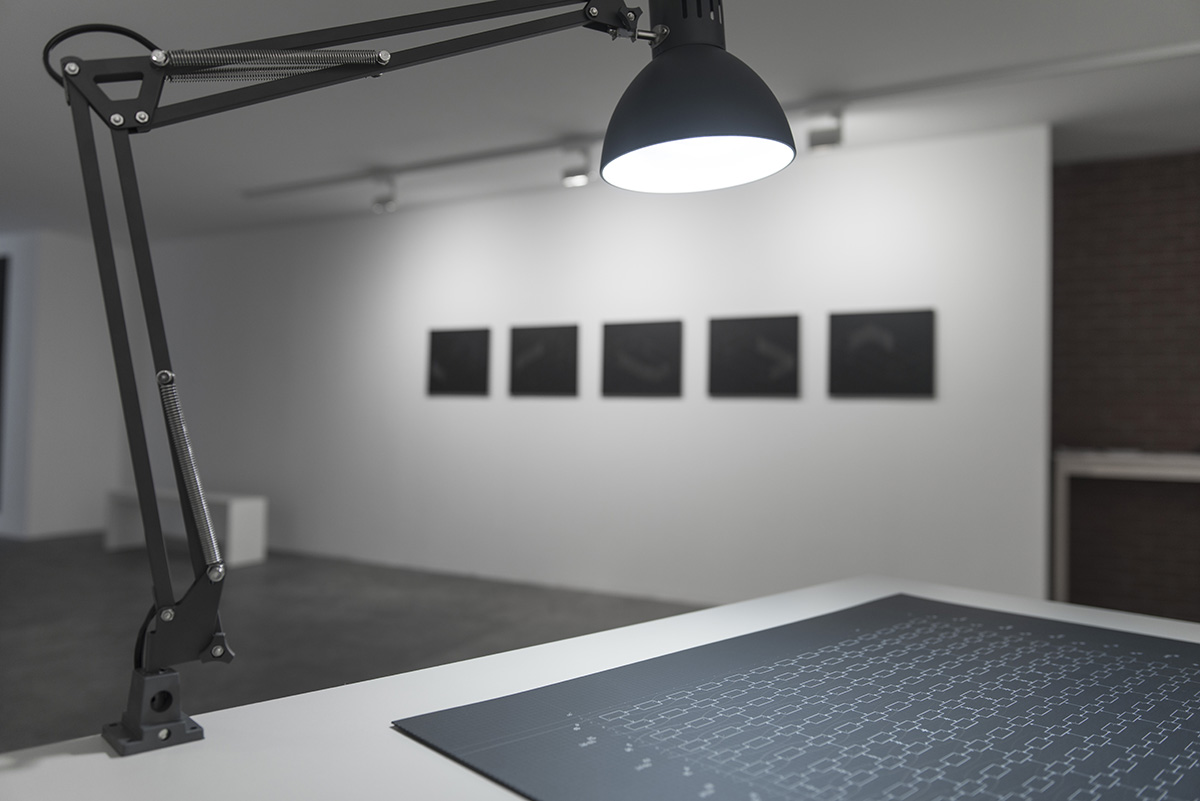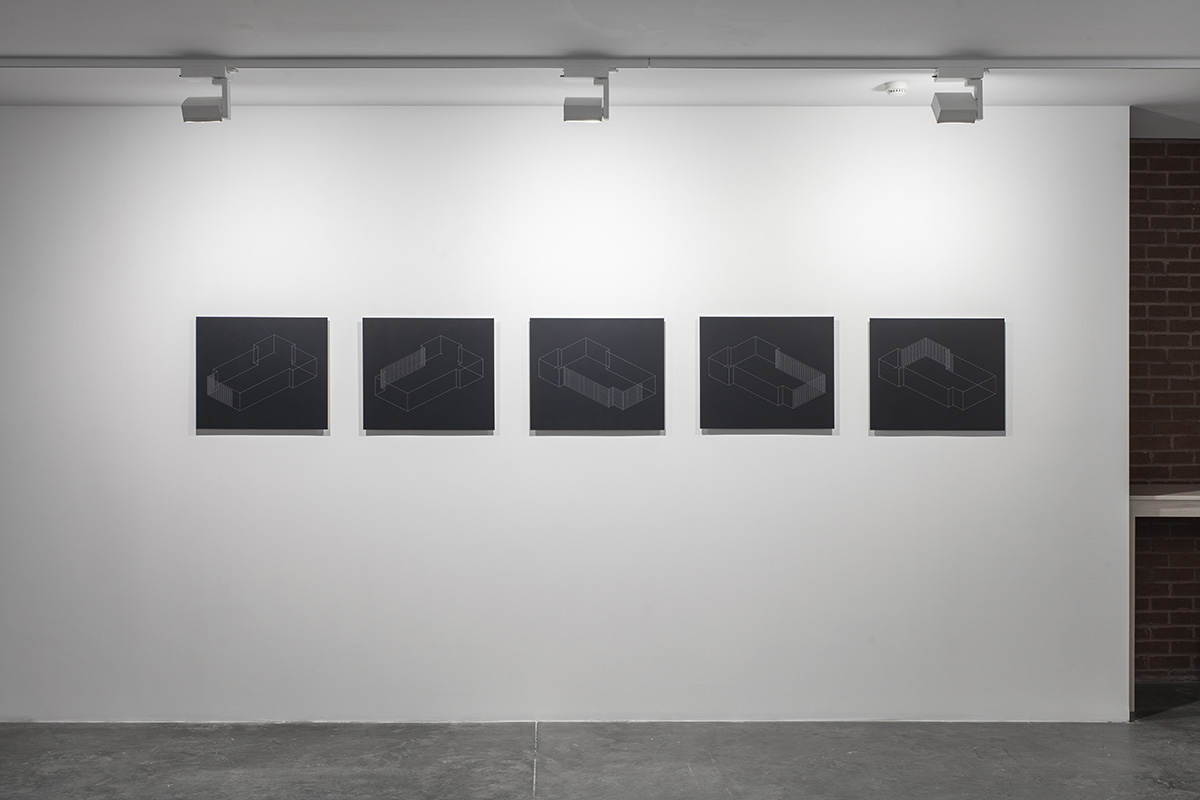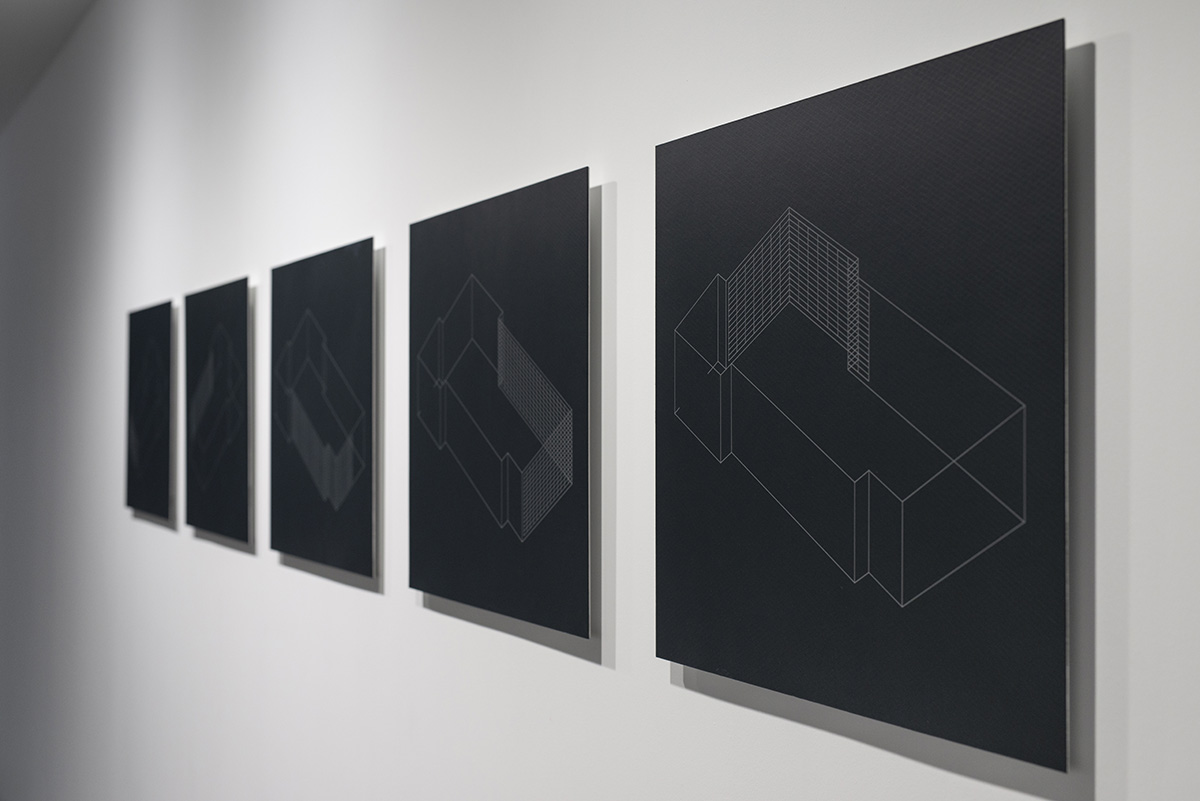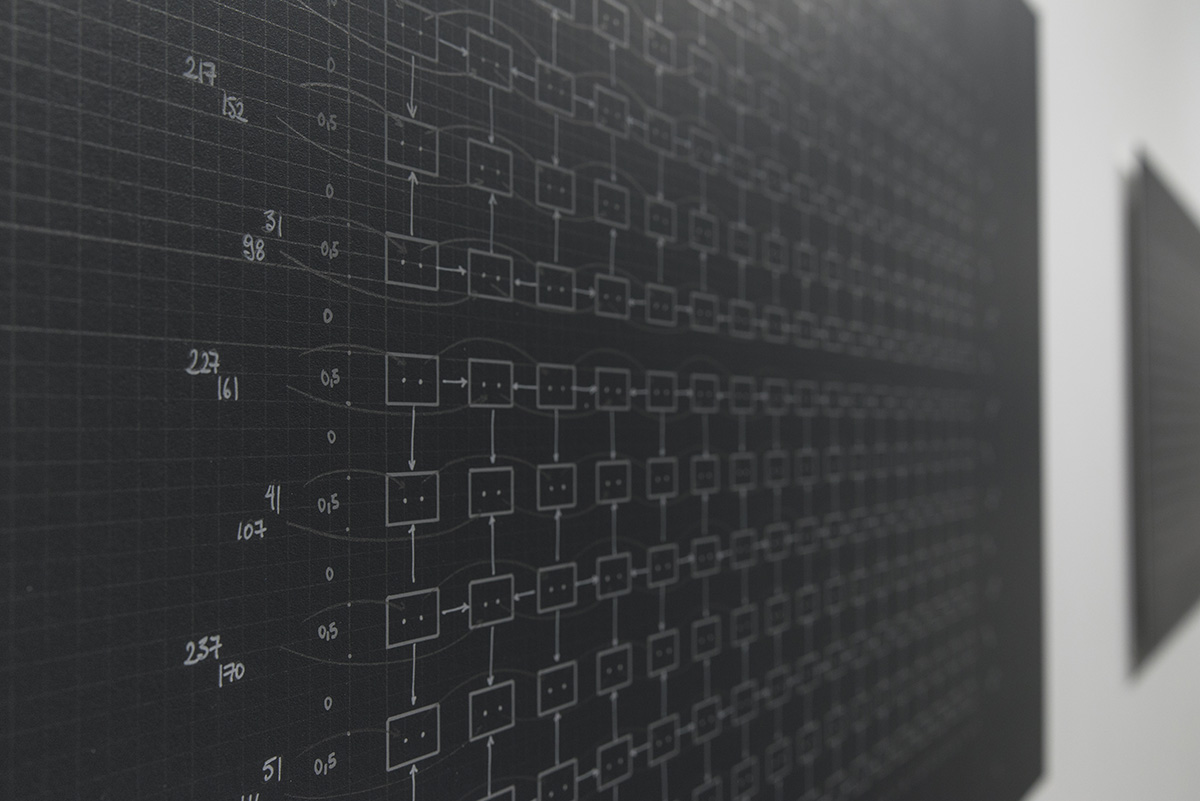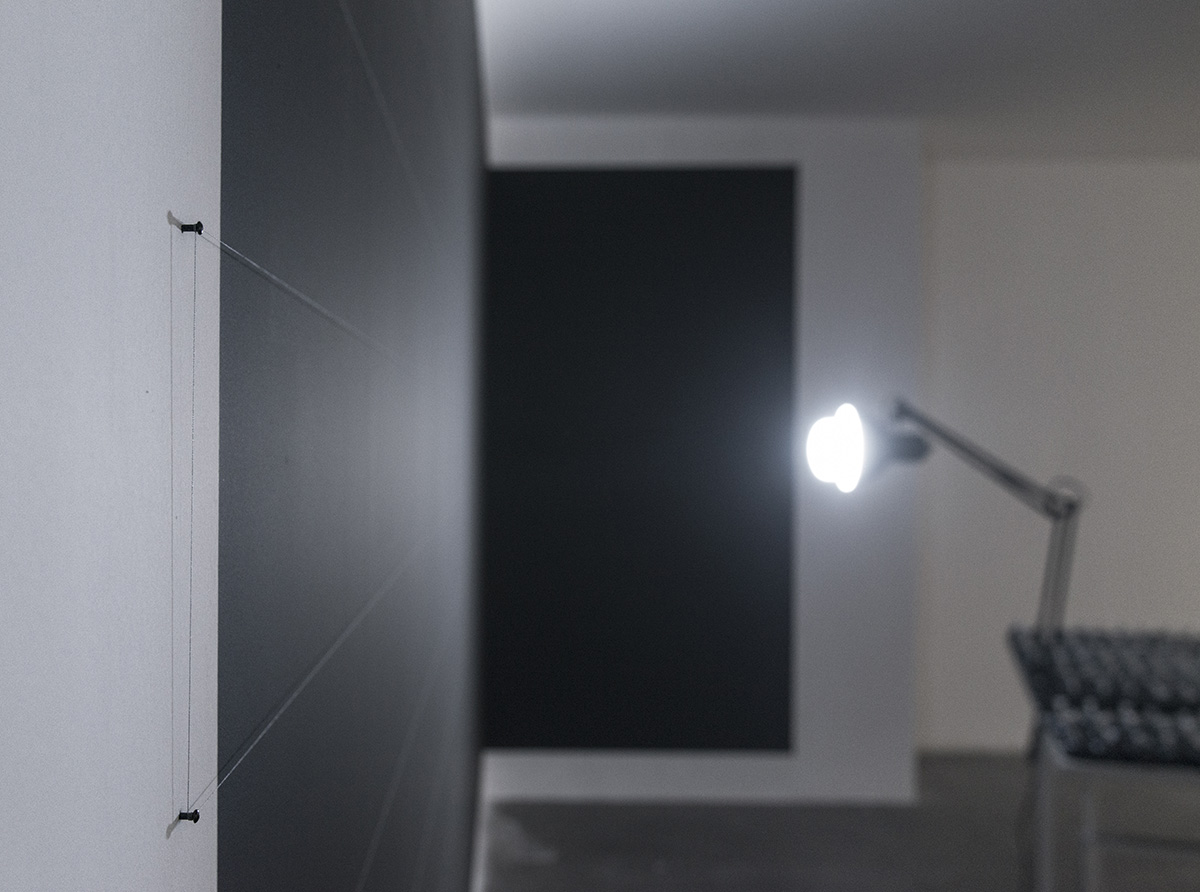ON THE BORDERLINE OF EMPRICISM: YAĞIZ ÖZGEN INSTRUCTIONS
Kerem Ozan Bayraktar
“The point of philosophy is to start with something so simple as not to seem worth
stating, and to end with something so paradoxical that no one will believe it.”[1]
Bertrand Russell
Instructions is a performative exhibition that directly reveals Yağız Özgen’s practice and form of thinking. It is prepared with great diligence, which transforms his form of thinking into the work itself. A now ordinary word “interdisciplinary”, is a notion that needs to be underlined when it comes to Yağız Özgen’s artistic approach. Özgen is one of the rare artists in Turkey who deals with the relationship between philosophy and art as competent as a philosopher, and reflects the philosophical problematics on his work without simply caricaturing them. Thus, at a time when similar approaches are prevalent, it is necessary to state that he stands at a quite far point from the general disposition of the masses. Özgen is not interested in the representations of social matters, personal narratives, subjective expressions or the aesthetic perception of abstract forms, but is interested in how we constitute all these. He is trying to grasp “how we make the world” by “making” art, and he contemplates on these two “making”s together. It is important to understand what kind of a sequence he follows in order to understand the artist’s practice without falling into the formalist ideas of abstract painting tradition.
Özgen has strong ties to Analytical Philosophy as well as Logical Empiricism. This tradition, which involves thinkers such as Alfred North Whitehead, Ernest Nagel, Kurt Gödel, Gotlob Frege, Bertrand Russell, Ludwig Wittgenstein, A.J. Ayer and Willard Van Orman Quine, eliminates metaphysics from philosophy, and defines philosophy as an activity that points to our limits of grasping the world, and that understands the world by analyzing language. It practiced philosophy not as a discipline that would talk about things beyond experience, but as an epistemic activity that enlightens the meaning of scientific statements and analyze the nature of language.
In this respect Conceptual Art is based on Analytical Philosophy’s efforts to define philosophy in terms of its subject, goal and method to eliminate metaphysics, and asks whether aesthetics is a necessary element for art to perform its function. Many artists including Joseph Kosuth, Sol Lewitt and Bernard Venet, showed that aesthetics was not a necessary element for art to perform its function. Meaning that they made art by deconstructing art itself. One of the best ways to understand the function of something is, without doubt, to analyze, to decompose and to show which of these components are necessary for this thing to function. Although Özgen’s relationship with this tradition looks as if it is based on Analytical Conceptual Art (at this point it is important to remember that Özgen has been an active participant of The Definition of Art Group for many years), his practice mostly follows the way which was paved by conceptual-minimalists like Hanne Darboven, Sol LeWitt or Douglas Huebler. Thus, the artist analyzes the language and logic related matters not through the artistic use of verbal or written signs, but through marking objects.
In order to grasp the form of the exhibition, we need to look at the thing that we perceive as object through a different lens because the artist is concerned about this “lens” itself.
In daily usage, when we talk about an object, we talk about what we see. For example, when I use the word ‘keyboard’, I mean “the thing that my fingers touch while I am writing this text right now”. In reality, I sense some hardness on my fingertips that is caused by touching, I feel my fingers go up and down, and I hear the mechanical sounds of the keys. None of these sensations are the “keyboard” itself. Why do we gather all this data as an entirety and deduce a thing called “keyboard”? It is even more surprising how we all mean more or less the same thing when we hear the sound of a word ‘keyboard’.
We sense some data at a certain time and place, and our brain builds these sensations in certain forms. Imagine that you go to a universe that you have no idea of, that you can go through experiences that you had never encountered before (the world must feel like this when we are born). We would group together all colors, sounds and tastes that we sense, we would relate these with the abstract concepts on our minds and express them with certain symbols. When we make this grouping, whether we notice or not, our brain assembles logical relations on its own. For example, we categorize similar things by making a similarity correlation between them. When we talk about a black wall, we actually know that it is not the same black because the environmental conditions change continuously. Still, one must find an ideal average which renders all those different blacks as similar. If these “averages” did not exist, we would not be able to communicate or even survive. When one said ‘black’, one might have meant a totally different sensation, for example the one that relates to orange, and this would have made things quite difficult. It is important to underline that there is a “transitive” relationship here. The thing that you call ‘black’ at that moment might be a gray that I perceive at the same moment. Even though the possibility of it being orange is relatively lower, these are different sense-contents that have totally different color fields.
A. J. Ayer defines the objects as “logical constructions out of sense-contents”[2]. It is how we call all different sense-contents “black”. Thus, when we state that we see a table, we are actually making an odd statement because a table is not a tangible thing that can be seen or held. We talk in this manner to make life easier. We would be baffled if someone seriously asked us to “show the table”. We could only mention colors, shapes, geometrical relationships, textures, sense-contents that we were able to group together or things that we are able to talk about. However, none of these are a table. If we were to ask a scientist, he/she would probably say something like “there is no table here, there is a restless molecular mass”, and would build an even more abstract model that is incompatible with all of our intuitions. Thus, we “build” things like table, chair, painting with sense-contents that are external to our bodies, through logical patterns on our minds. In order not to be misunderstood, I would like to underline that this situation does not relate to the Platonist ideas that assert the world is nothing more than an illusion. On the contrary, we build objects with the data that we gather from the physical world. But it is important to grasp that these are our patterns. At most times the things that we talk about are not the physical objects themselves, but their impact on us. When we are exposed to an external factor that distorts the mind’s logical structure (for example when you are on anesthetics), the thing that we call a table disappears, and we form different things with different sensations. Another important point to make is that this is not a psychological but a physical situation. This situation is as physical as the fact that two cameras will never be able to show the same image because their positions and timings are always different.
Before proceeding into Özgen’s works it is helpful to consult how one more philosopher defines an object. Bertrand Russell states that object is “a series of events that are connected to each other through causal relations”[3]. Again, this is similar to a scientist talking about an object as a “restless mass of particles”. As we already know that nothing is static, our perception is also not static. Even the most stable objects consist of small events, which consist of other events. Everything changes either very slowly or unbelievably fast, depending on our scale. This is why when we talk about “an object”, we talk about “a series of events”. Moreover, the movement itself is included in our mind’s abstraction by sampling different senses. In other words, just like we group similar sense-contents, we also recognize similar changes by grouping them together. On the other hand, it would have been impossible to live in a world where everything moves constantly. Because we do not need more information or to “perceive” all those endless and detailed movements to survive. Although the world is not static, our mind perceives many things as such. We stitch different events together with causal relations. For example, we are able to perceive a flying bird in a “continuity”. We form a causal chain between the bird first appearing over there and now here.
Considering objects as events, we need to be concerned not with “what things are”, but with “how they change”. This is exactly what Özgen does. He is not concerned with ideal representations, but with the experiment itself; not with the universal, but with the particular. Instead of asking metaphysical questions concerning what something is, he models everything in regards to the changes that take place in relation to each other.
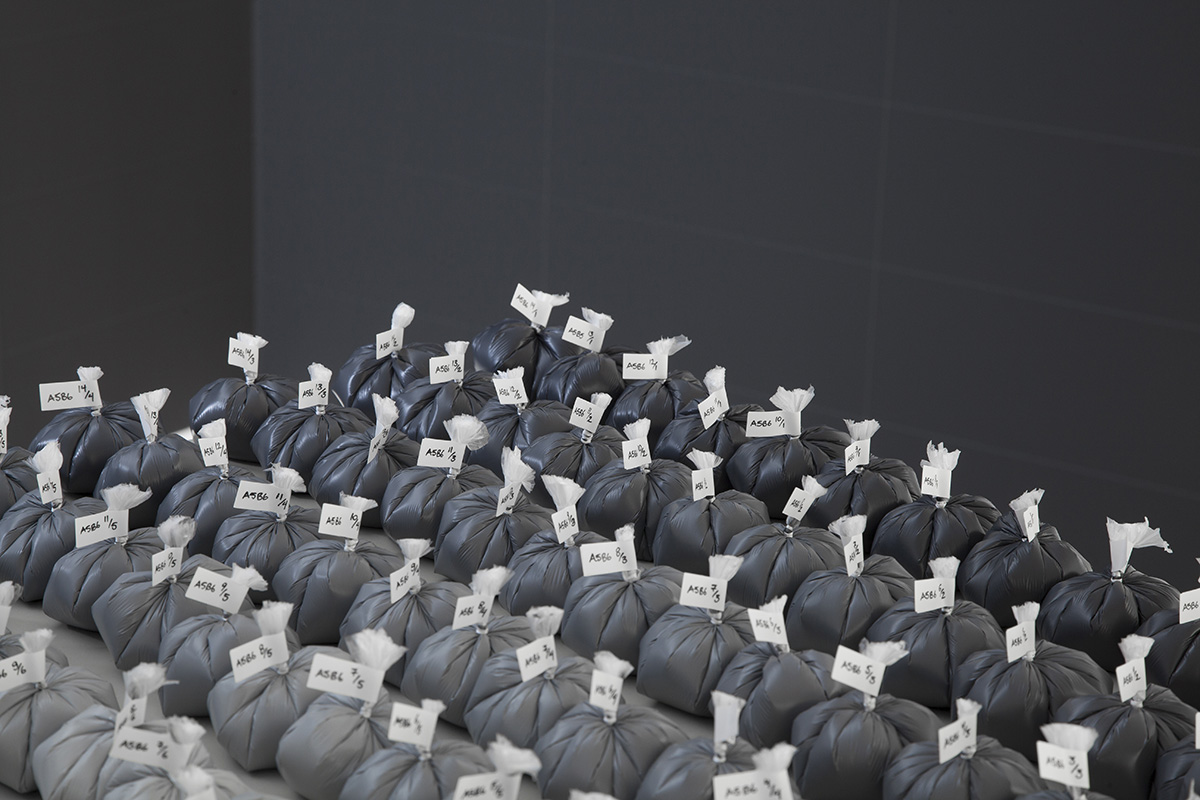
Instructions
2019, Part of the 196 pieces of tagged paint bags
After this broad introduction about what an object is, we can proceed to analyzing what sort of connections do Özgen’s works make with this perspective.
The exhibition features two adjacent walls painted in black. A spot light is reflected on the wall. Naturally, the light gradually lightens the tone of the black from the closest point to the light source towards the painting’s corners. There are some paint strokes on the wall. These strokes are wiped in the same tones as the color on the wall, in order to reflect the differences in tonality caused by the light. These pigments are also placed in small bags on a table. The number of positions on the wall matches with the number of bags on the table. Some of the other walls in the gallery feature the “instructions” which give the exhibition its title, and consist of isometric drawings, arrows, numbers and grids. In their own language, instructions show how some paintings could potentially be made on this wall. These are various markings showing the right sequence to follow when painting, which colors should be mixed together and in how many steps the painting should be finished.
Let us remember that an object is a series of events. Whereas the space can be considered as a setting of the references that allow us to relatively relate these events with other events and form the relations between positions of various things. In that sense, Özgen’s exhibition consists of different spaces. First of all, the walls in the exhibition are far from functioning as carriers; they directly determine the work itself. While the wall becomes the surface for the event that takes place for the first production (just like a mathematician forming basic structures to reach to more complex ones), it also defines its limits. In that sense, Özgen’s exhibition is a closed system; it is a virtual game played with possible paintings that can be made with certain limitations, elements and acts. From a different aspect, he handles the act of painting as an open structure that can continuously produce new information because it contains time and light. Özgen makes art on this tension line, allowed by a dispute that we can trace until the parting of Rationalism and Empiricism.
Because the exhibition is formed on spatial relations mapped onto each other, there are other spaces that mapping will occur (at least two things are necessary in order to map something to another thing). These are the table that carries the bags and the papers that feature grid drawings. Just like in Albrecht Dürer’s Draughtsman Making a Perspective Drawing of a Reclining Woman (circa 1600), the grid functions as a reference plane used to map different relations. For example, we are able to understand the coordinates on the wall which states “in which bag on the table is the color stain” or “where exactly do the coordinates in the diagram corresponds to in the space”.
All artists use mapping. Art always shows a data set in a different setting with different data. In this sense, a painter making a landscape painting is also mapping: Painter interprets the set of data that he/she sees, and maps them with a different set of data (surface of the canvas, colors, etc.). Özgen, on the other hand, makes this mapping directly the subject of his work and questions the logic behind the complex production methods. The genuine aspect of his mapping is that he maps the wall itself onto the wall painting. In other words, he paints on the wall, what he sees on the wall.
There is another dimension to space that we need to consider: Time. In my opinion what makes Özgen’s exhibition different than his previous ones, is the fact that he takes this matter inside. In this exhibition, Özgen works not as a “studio artist” but as a “location artist”[4]. He goes to the space, turns it into the fundamental element of the work, and makes a performance in there. The connection between time and the work is not only limited to the process that took two weeks, the walls that were painted, paints and the performance that took place on the table.
The most significant element that emphasizes the work’s connection with time is the light. Light also prevents us from looking at Özgen’s grid as a Cartesian grid. The light sheds on the wall, and the artist finds the colors on the wall, which is not simply a black wall. The light that we see, is part of the electromagnetic spectrum that an eye can perceive; it has a wavelength, it flickers, it allows sight and allows the perception of the time difference between the event and the audience. Thus, there is an ephemeral, objective and dynamic relationship between the light, the object and the observer.
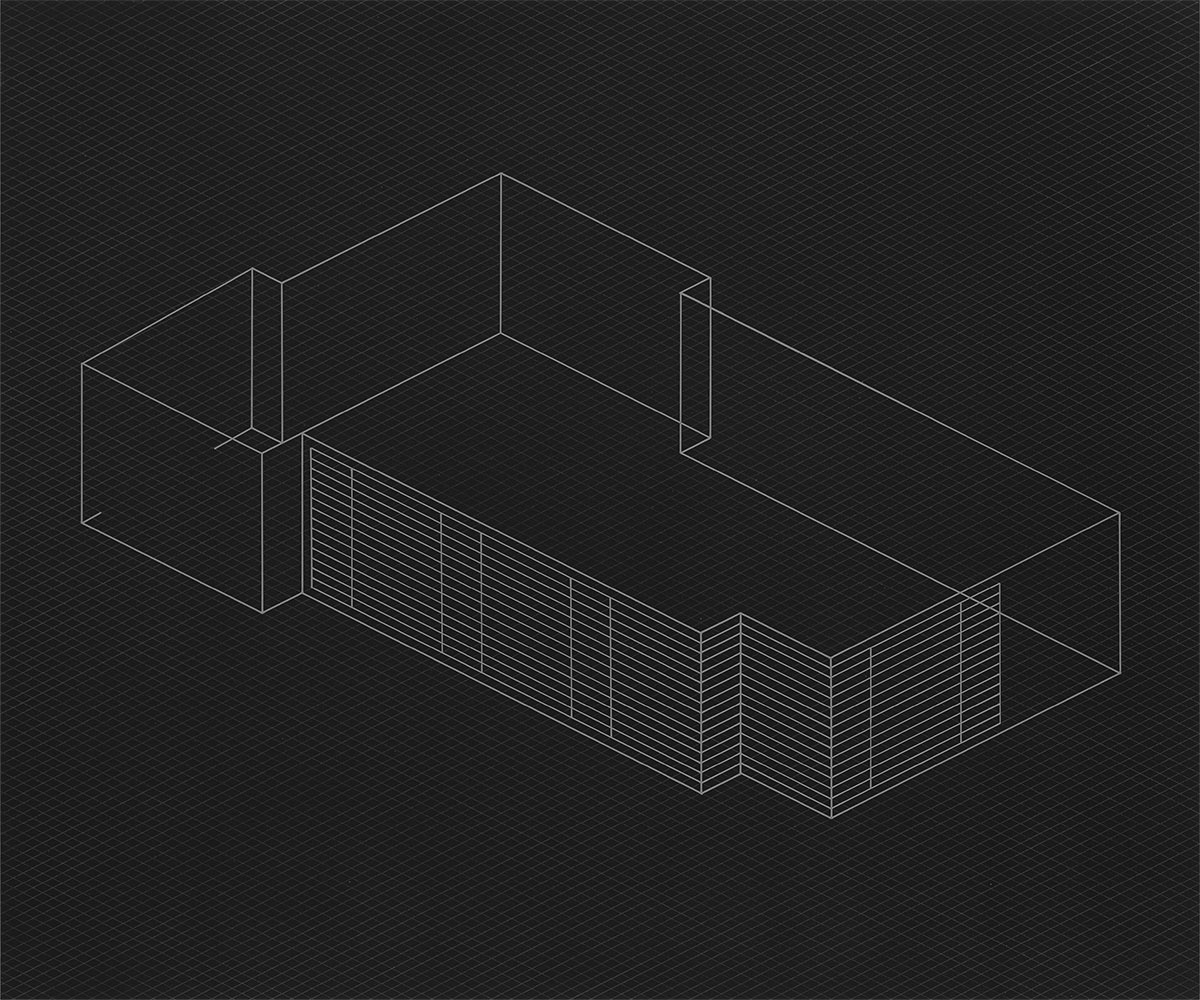
ÇLŞM: TSLK#5
2019, Pencil and acrylic on paper mounted on aluminum
On the other hand, light causes the painting to be perceived as an event, rather than an optic illusion. Conventionally, we expect the light to spread on the painting in a homogeneous way because we would not fancy the outside world to interfere. That is the reason why movie theaters are dark. The stage should break away from the outside as much as possible, otherwise we would not be able to fully devote ourselves to the world featured in the painting. Özgen does the opposite: he makes the painting in a light where there are strong differences in tonality, and paints these tonal differences. The light comes from the space that the painting belongs to, not from an ideal source from the painting, and we are able to experience this moment of light coming in while we are looking at the painting. We see the thing that made the painting making the painting, not as part of a narrative but in real-time.
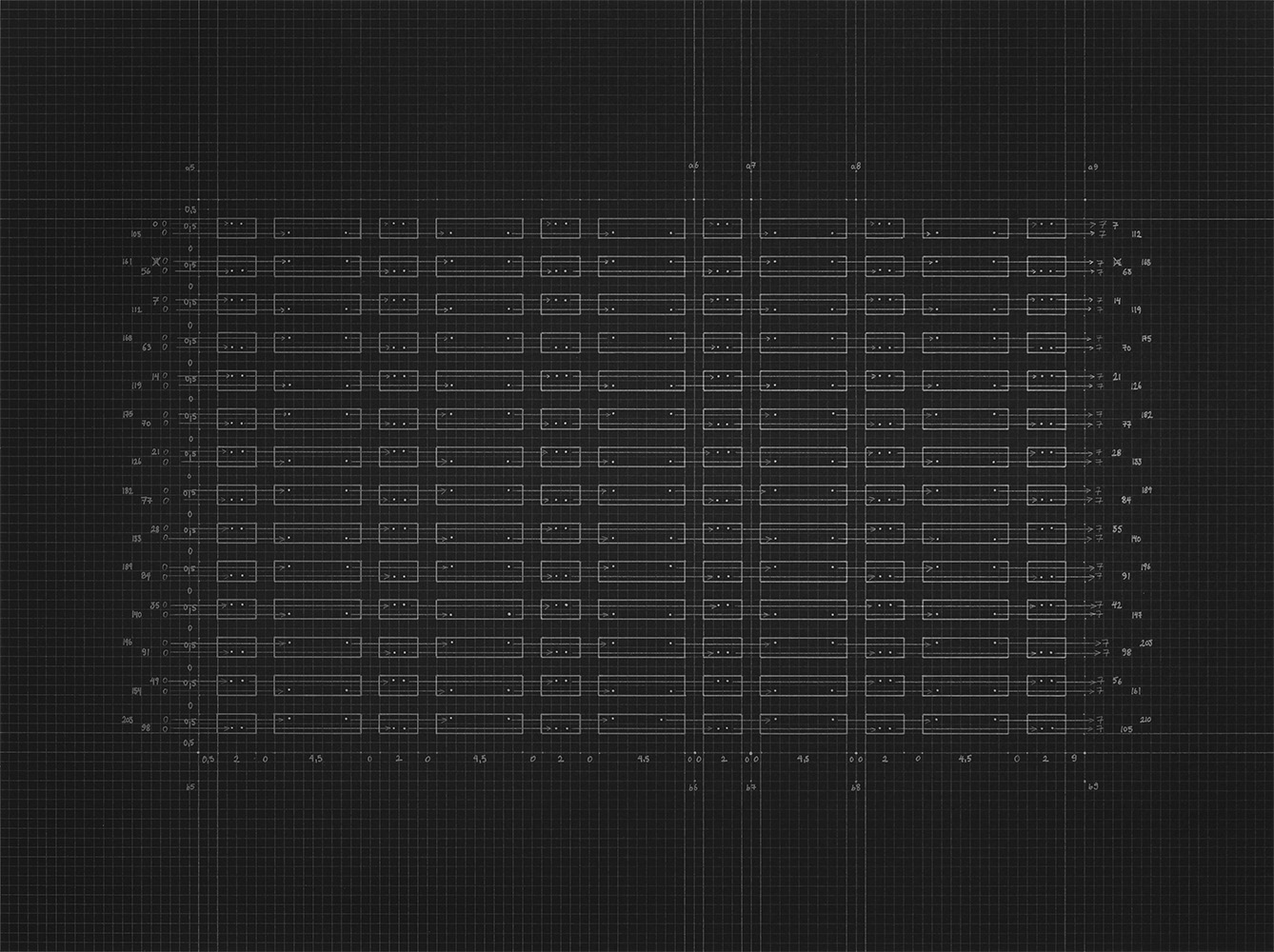
ÇLSM: YNRGLR#5
2019, Pencil and acrylic on paper mounted on aluminum
This real-time feature carries Özgen’s work to a distinct level. Özgen’s painting does not differentiate between the real space and the ideal space of the painting, or the viewer’s time and the representational time of the painting; he forms all this on the same layer. Why does that matter? Because he moves painting away from the universe of Idealism, he forms it as an object rather than a representational surface, and offers an alternative to the methodology of the formalists. He places the event-based relationship between the painting’s form and the physical conditions of the space that hosts it, in front of us in a manner that is impossible to avoid. While trying to remove painting from representation, formalists broke painting’s connection with time, and they had to place it in a geometrical universe. However, Özgen’s painting forms what is abstract over the physical world. When we attempt to change the physical conditions, the work loses its whole meaning. It is a mural painting, not a canvas because he underlines the same necessity once again. The things that allow us to see the painting (for example light or the pigments) are only supporting elements, they are not foundational. The light that was there during the making of the painting does not go anywhere, it continues to make the painting.
The only works that Özgen makes use of representation, are the drawings where he shows the potential paintings on the wall. These drawings show in which other ways could a painting be made, using the data (named bags of painting) from the actually experienced ones. Thus, they are directly connected to the physical because we constantly compare those drawings with the arrangement that stands before our eyes. They are made for this space and they make use of the architectural features of the space. To me, their most valuable attribute is that they do not allow us to perceive the events and the space as a single reality. The space is not independent from us, the observer. Then, there is no one way of arrangement. While showing the infinite linguistic possibilities of these potentials, Özgen actually presents why it is possible to make art, to talk, to state things about the world.
[1] Bertrand Russell, The Philosophy of Logical Atomism, 1918, in LK pp. 177–281 and CPBR8 pp. 157–244, p.193.
[2] A. J. Ayer, Language, Truth, and Logic, 1952, p. 30-31.
[3] Bertrand Russell, The Problems of Philosophy, 1912.
[4] Carl Andre’s statement, “Carl Andre: ‘Works of art don’t mean anything’,” TateShots, 10 April 2014.
https://www.tate.org.uk/art/artists/carl-andre-648/carl-andre-works-art-dont-mean-anything
